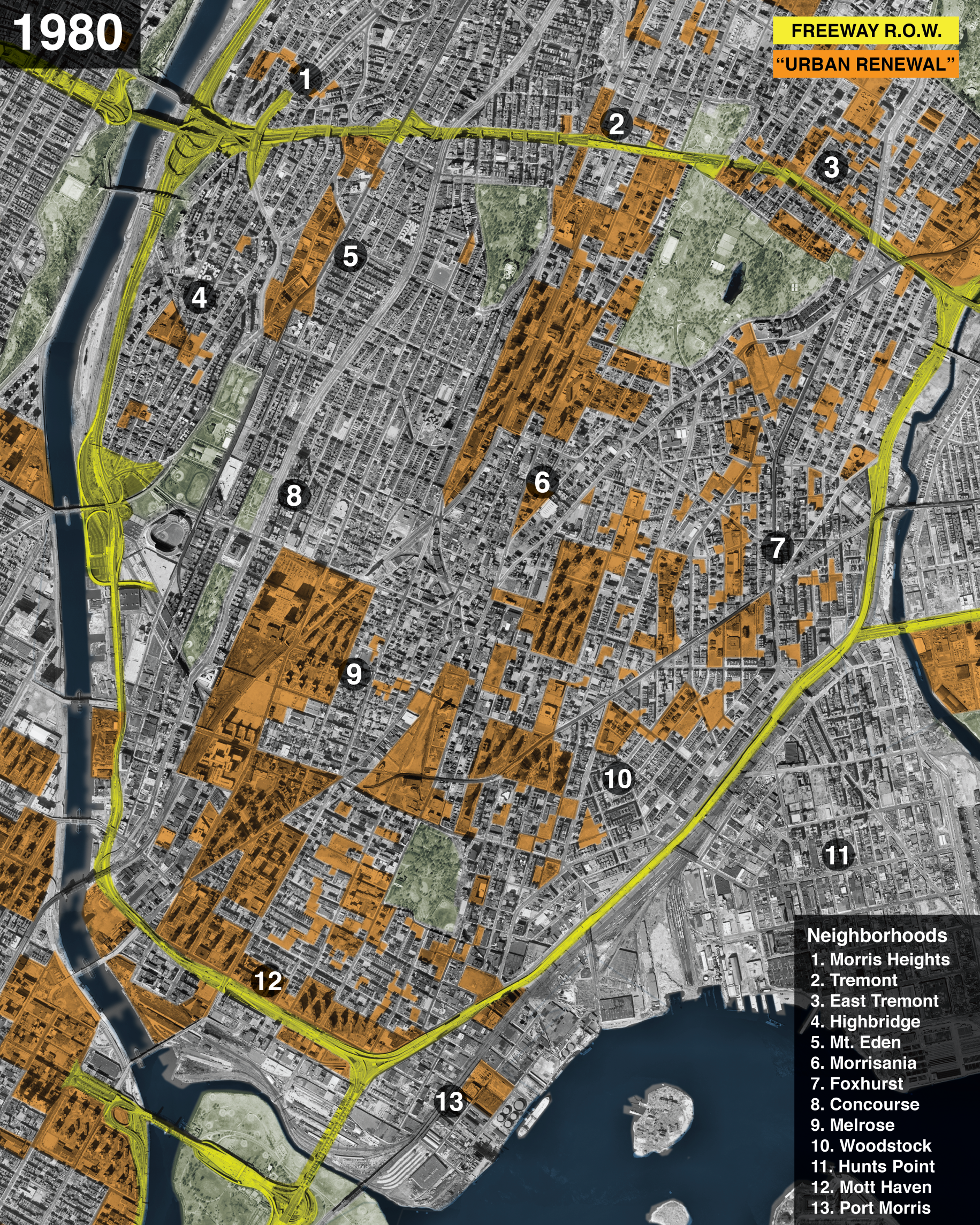THE SOUTH BRONX
In the 50s and 60s, Robert Moses had divided and surrounded the South Bronx with expressways. Using the “meat axe” (as he put it), the highways had required the demolition of thousands of apartments in hundreds of buildings, “disemboweling a dozen communities along the way,” and displacing over 60,000 people. Simultaneous with construction of the highways, in the name of “slum clearance and urban renewal,” Moses’ cronies at NYCHA had demolished hundreds of blocks of homes, businesses, places of worship, and schools; replacing them with single-use, highrise residential projects, set back and disconnected from the street.
In the 70s came the fires. “Fires consumed the South Bronx. Black and Puerto Rican residents were blamed for the devastation even as they battled daily to save their neighborhoods,” writes Vivian Vázquez, creator of @decadeoffire.
Of course the residents were not the perpetrators but the victims. The devastation caused by highway construction and “slum clearance” had physically divided communities, ravaged property values, and permanently blanketed surrounding neighborhoods in pollution. Prior to the 70s, govt-subsidized mortgages had lured white residents to the newly built, racially-restricted suburbs; while the racist policies of redlining (in which areas were graded for investment-worthiness based on race) had left black and brown residents with no choice but to stay. For redlined areas like the South Bronx, the city was also disinvesting in municipal services—including firefighting.
Because of the reduced property values and civic neglect, landlords had little incentive to maintain their buildings. What were once proud, beaux-arts New Law apartments—that had sustained a racially diverse and growing urban middle class—were left to crumble. Many landlords burnt their buildings for the insurance money. Many buildings burnt because of lack of upkeep: a spark from faulty wiring, a gas leak, etc. Either way, claiming it was necessary for the budget, the city was closing fire stations across The Bronx, ensuring that even a minor fire would have time to spread.
In the end, 80% of housing was destroyed and 250,000 people were displaced.

